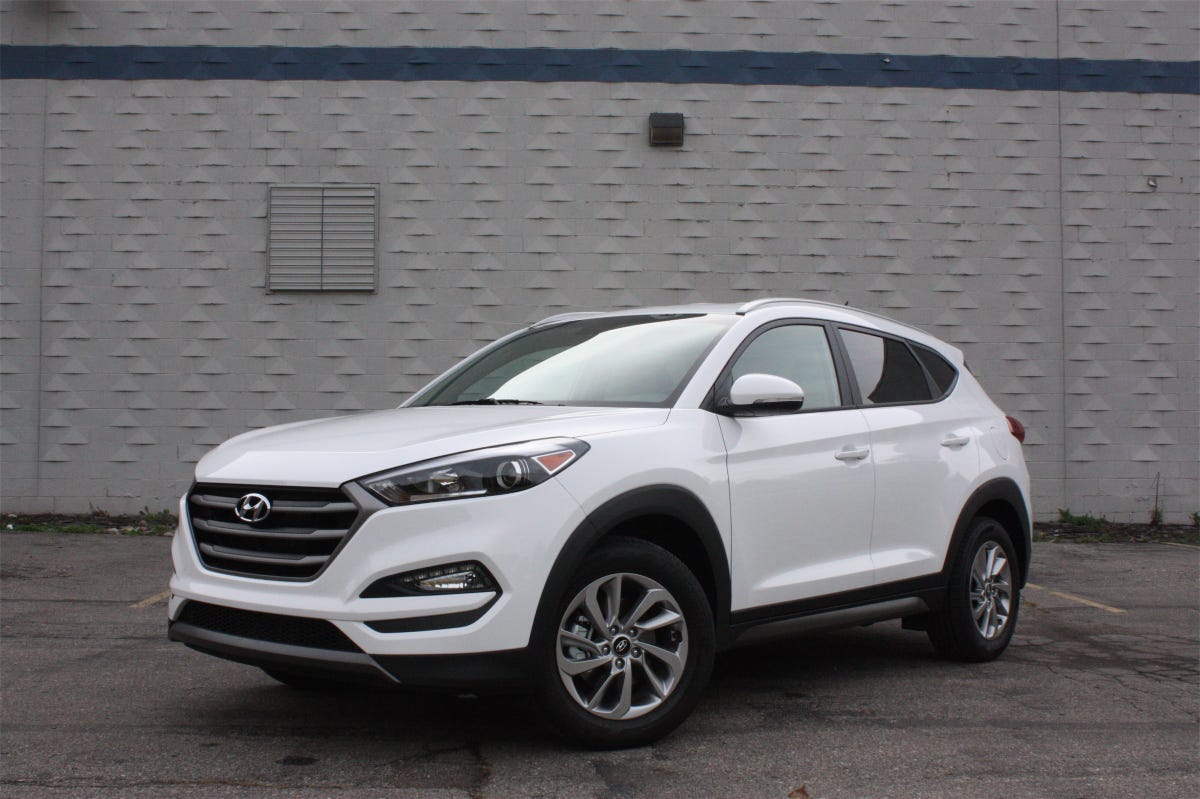2016 Hyundai Tucson's Eco trim isn't worth the extra green (pictures)
Hyundai's redesigned Tucson looks like a class bullseye, just not in this trim.

The Tucson's redesign is handsome, if a bit conservative.
It's easy to see how much design DNA is shared between this vehicle and its Santa Fe big brother.
A tapered greenhouse and blacked-out rear privacy glass lend the Tucson an athletic profile.
Dark trim makes it seem like the headlamps snug up directly to the five-pointed grille's slats.
A tailgate that extends all the way to the bumper hints at Tucson's easy-to-access cargo bay.
The Eco's 225/60 H-rated tires and alloy wheels look significantly meeker than the Tucson Sport and Limited models' 19-inch running gear.
The way the D-pillar flares outward suggests poor rear visibility, but thanks to clever mirrors, it's not bad.
Halogen projector headlamps are standard equipment on most trims, but HID units are available on the range-topping Limited.
Whistle-shaped tail lamps gain LED illumination in Limited trim.
Alloy wheels are standard across the Tucson line, as is a tidy 34.9-foot turning circle regardless of model.
Cleverly integrated blind-spot mirrors are a low-tech but very effective solution to rear visibility issues.
The Eco's cabin has plenty of disappointing materials that the Tucson's higher-level trims do without.
Analog gauges are easy to read, and steering-wheel controls are simple to use.
Front-seat comfort is good. Cloth is the only upholstery available with Eco models.
The rear seat has an adjustable backrest, which is a nice touch.
A pair of squared-off exhaust tips poke out from beneath the rear fascia.
No fancy electronic gearshift here -- if it ain't broke, don't fix it.
A milquetoast 5-inch color touchscreen handles audio chores. Regrettably, a larger screen with navigation is only available on the top-flight Limited model.
Graphics are clear and easy to read, albeit drab-looking.
A rear-view camera is standard on all Tucson models, including dynamic parking lines.
With the rear seats folded, cargo space nearly doubles to 61.9 cubic feet.
With the rear seats in use, cargo space is 31 cubic feet.
The Eco's seats are clad in stain- and odor-resistant Yes Essentials fabric.
A large center console cubby features a pair of 12V outlets, and more importantly, a USB input and mini-audio jack.
Although it's hard to imagine a scenario in which it'd be used, the Tucson features hill-descent control. The drive-mode selector, however, is likely to see more frequent usage.
Steering wheel controls are helpful and intuitive.
Badging is the only real visual telltale that this Tucson is an Eco model.
T-GDI stands for "Turbocharged-Gasoline Direct Injection"
This thoroughly modern 1.6-liter powertrain puts out good numbers, but falls down when it comes to refinement.

